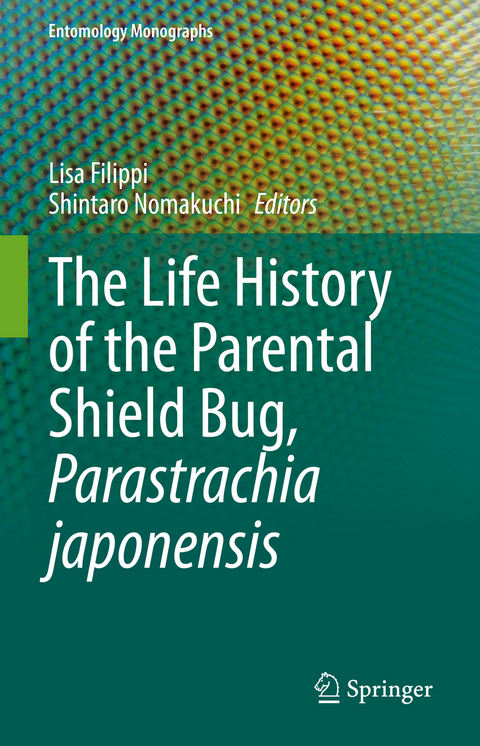
The Life History of the Parental Shield Bug, Parastrachia japonensis
Springer Verlag, Singapore
978-981-19-3017-1 (ISBN)
It is expected that the evolution of parental care behaviors in the strictly semelparous P. japonensis was more directly influenced by the benefit to females that arises from enhanced survivorship of current offspring, rather than any possible cost the females might incur in terms of reduced future reproductive success, because no future reproduction is possible. The authors explain how the different parental cares in this species enhance offspring survivorship in the context of the ecological conditions it has experienced over evolutionary time.
The book begins with a recap of the earliest studies, the reports through 1991, and then introduces the many fascinating aspects of the life history, neurobiology, physiology and behavior of P. japonensis that have been newly discovered since, and those aspects that have been confirmed through experimentation over the past thirty years. This comprehensive review of information will be useful for comparative studies of parental care in other semelparous and iteroparous organisms experiencing both similar and different ecological constraints. The book will be of academic interest to undergraduate and graduate students of entomology, zoology, behavior, and behavioral ecology.
Dr. Lisa Filippi began investigating Parastrachia japonensis in 1989 for her Master’s and Doctoral degrees in Saga, Japan, where she lived for 20 years. She joined the faculty at Hofstra University upon returning to New York in 2002 and is a Professor of Biology. Dr. Filippi teaches General Biology, Entomology, Organic evolution, and Behavior. She continues to study P. japonensis on visits to Japan, and investigates the related species, Sehirus cinctus here in New York. She recently began monitoring the natural expansion of coyotes onto Long Island, the last reaches of the continental U.S. to have an established coyote population.Dr. Shintaro Nomakuchi earned his Doctoral degree investigating reproductive behavior of the damselfy, Mnais pruinosa. His P. japonensis research began in 1993 when he joined the faculty of Saga University in Japan. In addition to teaching and supervising an army of undergraduate and graduate students investigating P. japonensis and four provisioning Japanese cydnids, Dr. Nomakuchi translated into Japanese, either alone or with others, three biostatistics texts, a seminal text on dragonflies, and An Introduction to Behavioural Ecology (Davies, Krebs and West, 2012). He is currently Professor Emeritus of Agriculture at Saga University and lives with his family in New York.
Chapter 1. General Biology of Parastrachia japonensis.- Chapter 2. Mechanisms for prolonged survival without food.- Chapter 3. Mating behavior.- Chapter 4. Parental care.- Chapter 5. Parent-offspring communication.- Chapter 6. Foraging strategies.- Chapter 7. Nematodes exploiting P. japonensis.- Chapter 8. Future directions: where do we go from here?
| Erscheinungsdatum | 04.11.2022 |
|---|---|
| Reihe/Serie | Entomology Monographs |
| Zusatzinfo | 51 Illustrations, color; 57 Illustrations, black and white; XXIII, 272 p. 108 illus., 51 illus. in color. |
| Verlagsort | Singapore |
| Sprache | englisch |
| Maße | 155 x 235 mm |
| Themenwelt | Naturwissenschaften ► Biologie ► Genetik / Molekularbiologie |
| Naturwissenschaften ► Biologie ► Ökologie / Naturschutz | |
| Naturwissenschaften ► Biologie ► Zoologie | |
| ISBN-10 | 981-19-3017-1 / 9811930171 |
| ISBN-13 | 978-981-19-3017-1 / 9789811930171 |
| Zustand | Neuware |
| Informationen gemäß Produktsicherheitsverordnung (GPSR) | |
| Haben Sie eine Frage zum Produkt? |
aus dem Bereich


